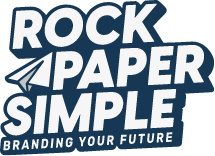
Sometimes there’s a bit of confusion about the difference between an icon, emblem, wordmark, and logo, and why it’s so important you not use them interchangeably. Each serve a specific purpose, and while they may sometimes look alike, the intention behind each is very different….so today we’re breaking it down for you!
This blog post, one of our most popular, was updated on March 29th, 2019 to include even more info and examples of icons, logos, and wordmarks (oh my!)
Logo
Logos establish relations, and help viewers create a connection between a company and its product- it is essentially a simplified ad! Logos are the symbol, or face, of the organization. They should inspire an immediate recognition of the company’s brand, core values, products and services. They can even provoke emotions regarding the quality of customer service, the cultural significance of the brand, etc. A logo is a powerful representation of your business. It conveys a much larger message than you may have thought!
A logo can be just an emblem, just a wordmark, or it can encompass both – often the formula for a strong visual brand identity is emblem + wordmark = logo. When both a wordmark and emblem are used to create a logo either element can be used individually, but are not the brand’s logo (unless great success has happened and the brand can drop the wordmark, like Starbucks).
Here are some examples:



Emblem
For many brands, Rock Paper Simple included, an emblem is created to further identify the company and it becomes the mark of that organization. For us, it’s our “pointer” which appears in our full logo or stands alone in usage on social media, stickers, and collateral. The emblem signifies a specific characteristic or quality about the company and can be used to identify the company on its own.
Emblems are more significant of brand identity, so they tend to have more detail in them than icons in order to distinguish branded content from action buttons in an app or on a website. Since most profile photos on platforms like Facebook are square or circular, it is common practice for emblems to be designed for use on social media.
Here are some examples:


![]()
Wordmark
A wordmark is exactly what it sounds like – the brand’s words, usually the company name, in an immediately-recognizable, distinct typeface that, even without images can be used to identify the brand. The wordmark tells directly what the related content is associated with, in case visual familiarity with the emblem fails.
Here are some examples:
Icon
Icons are meant to convey abstract thought and they artistically summarize an action or operation- they represent what is being offered. When people see it, the icon should create an immediate understanding of what the creator/business/website means to express. It helps the viewer to simplify thought and make fast connections.
In the instance of mobile apps, most organizations choose the emblem part of their logo, or often a defining feature of their brand or service they provide, to be the icon. This way they remain instantly recognizable. However, they are made based on the branding and should not stand on their own to identify the brand itself, with exceptions from massively popular products and services like the Facebook “Like” icon.
Icons are almost always designed quadratically and are designed to scale within specific dimensions. This way they fit square App icon dimensions, and/ or help provide consistency when designing actions on a website. They generally remain very small.
For example:




On our website, our menu for internal pages has identifying icons, to help better direct visitors to the information they need. On our services hub page there are even more icons next to our offerings. These can help a client further differentiate what they want to know more about. Here are examples of other icon we see every day:
Facebook’s “Like” icon Star Wars Rebel Alliance Icon iPhone FaceTime Icon
![]()

![]()
The one thing all brand elements have in common — they should always be designed as vectors, so that they never lose quality when resized for various needs!
Still confused? Need help designing a true brand identity package? We’ve got your back.
Call us or send a quick message!




